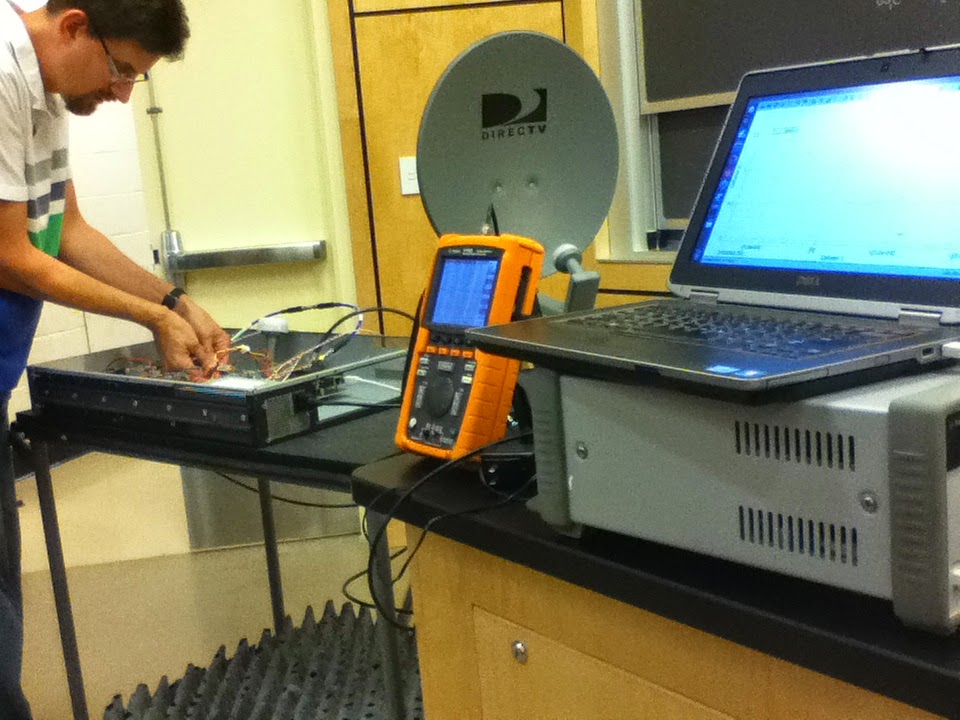Everyone seemed especially drowsy and tired this morning. It was like we were all hit by the realization that we're reaching our last week of the program (or maybe it was just because they regretted not applying to our Physics Academy since...you know...our academy is the best).
 |
| Jim demonstrating some concepts of radio telescopes |
We had a pretty intense day of lessons, lab, interest groups, and another lecture from the one-and-only Phil Nelson. Our class started off with a sheet that we had to fill out by ranking a list of different experiments so Craig will know which interest groups to assign us to. After Bill talked to us about the history of some of the most influential physicists such as Galileo and Roemer, we worked on the first part of our lab for the day on the speed of light. The main purpose of our lab today was to build our circuit and set up for tomorrow's second part of the experiment. Although Bill's explanation prior to the lab seemed simple enough, it was actually a lot more difficult than I thought. Craig and Bill were very helpful and guided us through the whole process since it seemed pretty evident that we were struggling. After a few seconds of succession however, our laser suddenly stopped working and we were back to square one. Messing around with the wires and the laser pointer weren't giving us any results, so we all gathered back down in the classroom for Phil Nelson. It was definitely not a lecture that we wanted to miss.
Once again, Phil did not fail to astound us with another amazing presentation. His demonstration today involved the use of syrup again, but it was for a completely different lesson on fluid mechanics. To be more specific, viscous fluids. We ended up figuring out an equation for viscosity and even learned about how certain specimens move in water. By the time when we were all hooked to this newly introduced concept, it was time for lunch. However, it wasn't much of a break for my group and I though, since Mary gave us a chance to work on the circuit set-up that we weren't able to finish earlier.
 |
| Cool Architecture of a building across our informational session |
Luckily, we successfully finished setting up our circuit with a working laser before our break ended. Everyone was looking forward to what was in store for us after lunch, since Craig finished assigning us into our interest groups! The majority of the class got their first choice and I was super excited to start learning about radio telescopes. Jim, our instructor for this experiment, started off with a few introductions and discussed some general background information on telescopes. One thing I found pretty interesting was how he defined the three major sciences: "If it's green, it's biology. If it stinks, it's chemistry. And if it doesn't work, it's physics." Choosing my interest group on radio telescopes is seriously the best decision I've ever made. We learned that rather than having objects "look bigger" when we view them through a telescope, we ware actually just changing the way we perceive angles, proving that perspective is relative. The goal of a radio telescope is to only collect light waves from particular directions. And in order to make radio waves, we would have to accelerate electrons by making them move back and forth.
We ended the day with an informational session by the Dean of Admissions in UPenn. I was very grateful that he took the time to share all his experiences and helpful information on applying for colleges. Overall, it was a very productive and wonderful day as always. The last week of Physics and UPenn is bound to be intense, but I am ready to tackle it head-on.

No comments:
Post a Comment